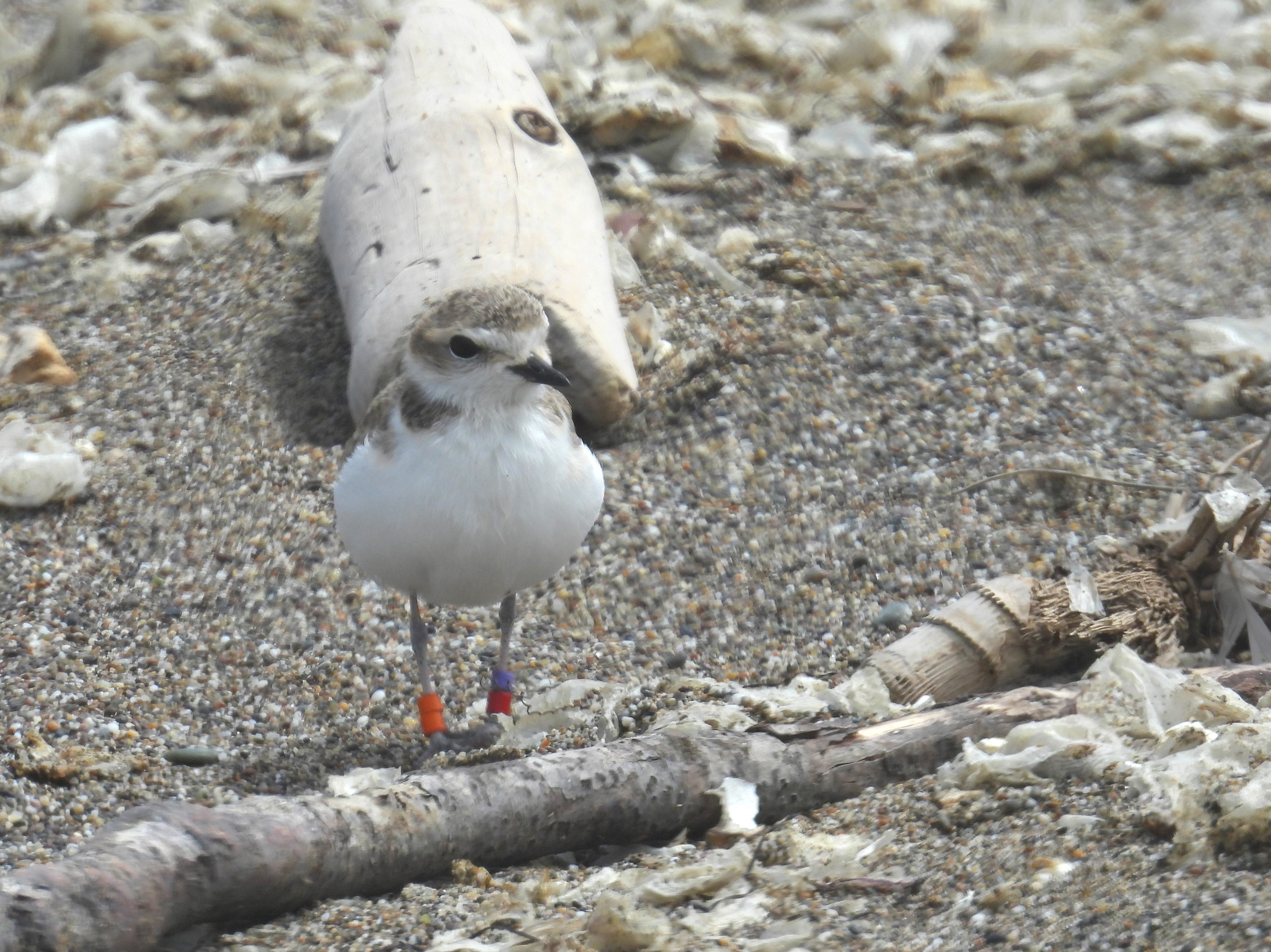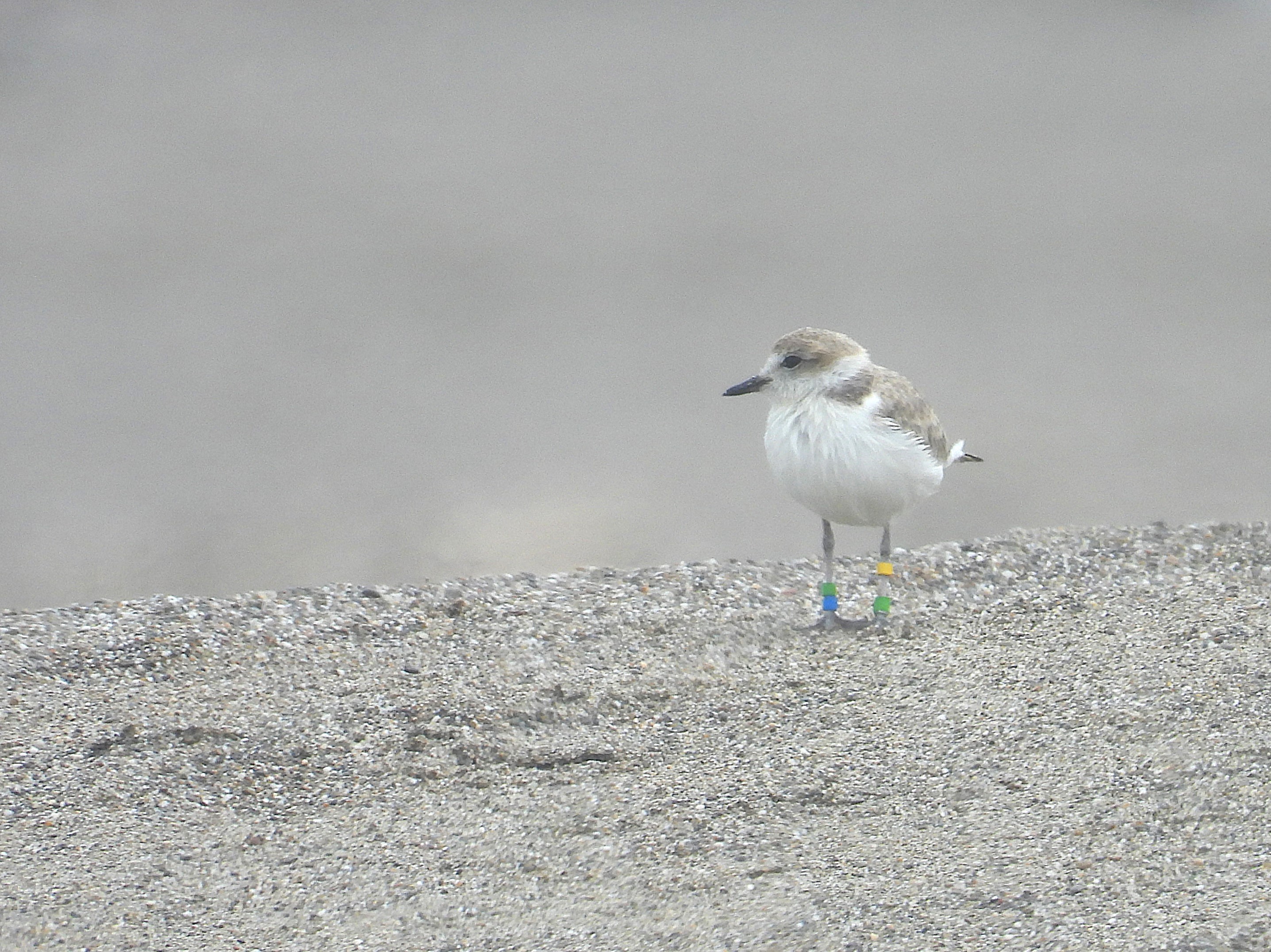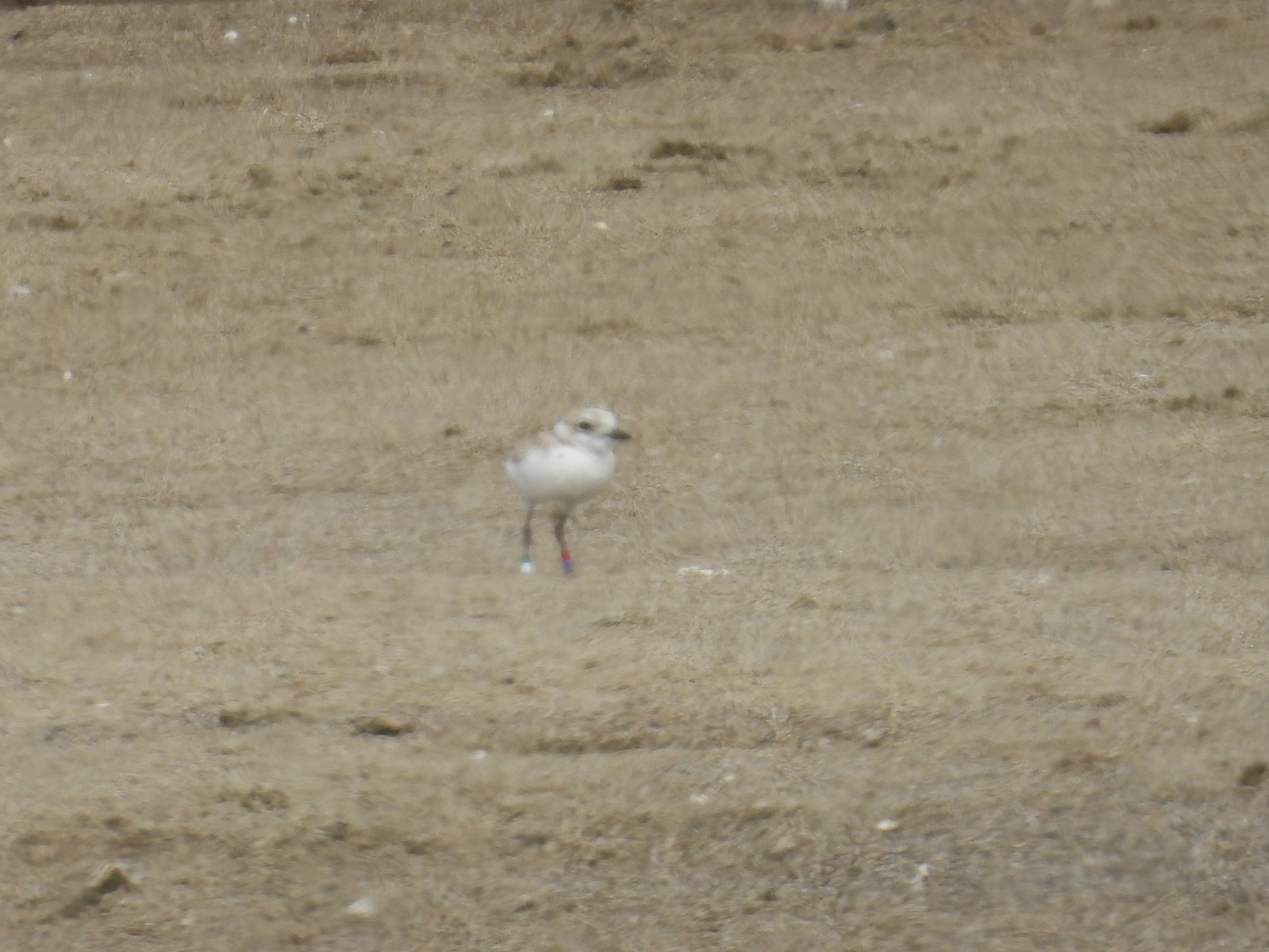Overview
Hello Ploverites!
As our season continues, we are starting to see some snowy plovers winding down their breeding efforts, but most definitely not all birds are trending that way. We are still seeing multiple pairs looking like they will have their last eggs of the season on the ground any day now, with one new nest being found at Limantour this week (our first at that site in well over a month). In the news about chicks on our beaches, we finally have our first fledges from the Great Beach! Two chicks from a nest in the Abbotts Lagoon restoration area (RA) were found foraging along the western shore of the southern lagoon earlier this week and just this morning, a chick from Kehoe was found with its male foraging about half a mile south of the mouth of Abbotts Lagoon. We had been seeing this male acting broody in the RA for the last few weeks but had not been able to confirm his chick until today. Even as mobile, older chicks, birds can be hard to find; however, the second they fledge, they are much more willing to be out in the open, almost surely because of their new skill of flight to avoid threats.
Some of you might recall the crazy windstorm we had the first weekend of May that knocked out the majority of our active nests at the time. While checking nests after the event, we found two eggs abandoned and buried in the sand, but still very much in the process of hatching. These two eggs were collected (along with a third, unviable egg) and brought to International Bird Rescue (IBR) in Fairfield. One of the eggs hatched out in the car while on the way and was nearly dry by the time we reached IBR! These two birds were raised at IBR's facility along with other snowy plover chicks originating from a site in the delta called Montezuma Wetlands.
On Monday, June 30, we released these two birds (now juveniles) originating from Point Reyes along with three juveniles originating from Montezuma Wetlands at North Beach. Since the release, we have continued to see four out of five of the juveniles, both Point Reyes birds and two of the Montezuma birds. We're thrilled that these birds are still hanging around and even more excited to see that our rescue effort of the eggs led to two fully fledged birds making it out into the seashore. Our team found a heavily damaged egg last week that was still in the process of hatching and brought it to IBR, so hopefully we will be able to release another bird that otherwise might not have made it back into the seashore in the near future.
As always, if you have any questions, please feel free to contact Parker Kaye via email.
Productivity Stats
- 50 total nests this season
- 7 active nests
- 14 hatched
- 29 failed nests
- At least 9 chicks on PRNS beaches
- 5 chicks fledged
Photos
 A juvenile snowy plover banded violet over red on the left leg, orange over orange on the right leg (vr:oo). This bird was found as an egg, abandoned and buried in the sand, along the beach south of the mouth of Abbotts Lagoon. This bird was hatched and captive reared at International Bird Rescue (IBR) in Fairfield and released on Monday, June 30, 2025, at North Beach along with its broodmate and three juveniles from Montezuma Wetlands.
A juvenile snowy plover banded violet over red on the left leg, orange over orange on the right leg (vr:oo). This bird was found as an egg, abandoned and buried in the sand, along the beach south of the mouth of Abbotts Lagoon. This bird was hatched and captive reared at International Bird Rescue (IBR) in Fairfield and released on Monday, June 30, 2025, at North Beach along with its broodmate and three juveniles from Montezuma Wetlands.
Photo credit: Parker Kaye / PRNSA
 A juvenile snowy plover banded yellow over green on the left leg, green over blue on the right leg (yg:gb). This bird was found as an egg in Montezuma Wetlands on a pond with heavily fissured mud which is a major hazard for chicks. This bird was hatched, and captive reared at International Bird Rescue (IBR) in Fairfield and released on Monday, June 30, 2025, at North Beach along with its two broodmates and two juveniles from Point Reyes National Seashore.
A juvenile snowy plover banded yellow over green on the left leg, green over blue on the right leg (yg:gb). This bird was found as an egg in Montezuma Wetlands on a pond with heavily fissured mud which is a major hazard for chicks. This bird was hatched, and captive reared at International Bird Rescue (IBR) in Fairfield and released on Monday, June 30, 2025, at North Beach along with its two broodmates and two juveniles from Point Reyes National Seashore.
Photo credit: Parker Kaye / PRNSA
 An adult male snowy plover banded violet over aqua on the left leg, white over white on the right leg (va:ww) at North Beach. This bird is watching biologists as they check eggs for signs of hatch. His nest hatched out on July 8, 2025.
An adult male snowy plover banded violet over aqua on the left leg, white over white on the right leg (va:ww) at North Beach. This bird is watching biologists as they check eggs for signs of hatch. His nest hatched out on July 8, 2025.
Photo credit: Parker Kaye / PRNSA
 A 27-day-old snowy plover chick banded red over violet on the left leg, green over white on the right leg (rv:gw) at Abbotts Lagoon. Snowy plover chicks are considered juveniles and fledged at 28 days old. While it has not been observed since this picture was taken, it is very likely this chick survived to 28 days old.
A 27-day-old snowy plover chick banded red over violet on the left leg, green over white on the right leg (rv:gw) at Abbotts Lagoon. Snowy plover chicks are considered juveniles and fledged at 28 days old. While it has not been observed since this picture was taken, it is very likely this chick survived to 28 days old.
Photo credit: Parker Kaye / PRNSA
 A 27-day-old snowy plover chick banded red over violet on the left leg, aqua over blue on the right leg (rv:ab) at Abbotts Lagoon. Snowy plover chicks are considered juveniles and fledged at 28 days old. While it has not been observed since this picture was taken, it is very likely this chick survived to 28 days old.
A 27-day-old snowy plover chick banded red over violet on the left leg, aqua over blue on the right leg (rv:ab) at Abbotts Lagoon. Snowy plover chicks are considered juveniles and fledged at 28 days old. While it has not been observed since this picture was taken, it is very likely this chick survived to 28 days old.
Photo credit: Parker Kaye / PRNSA
The National Park Service shall not be held liable for improper or incorrect use of the data described and/or contained herein. These data and related graphics (if available) are not legal documents and are not intended to be used as such. The information contained in these data is dynamic and may change over time. The National Park Service gives no warranty, expressed or implied, as to the accuracy, reliability, or completeness of these data. For more information: https://www.nps.gov/disclaimer.htm
